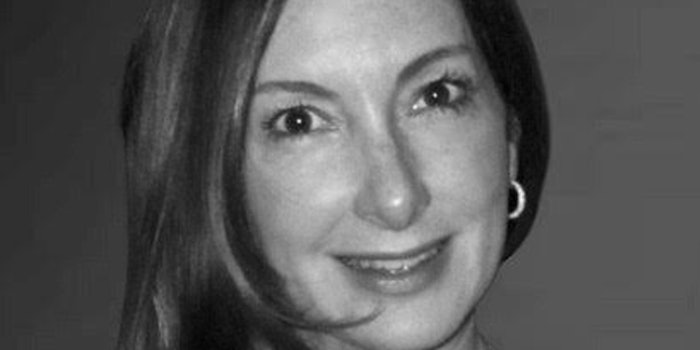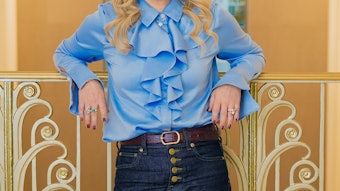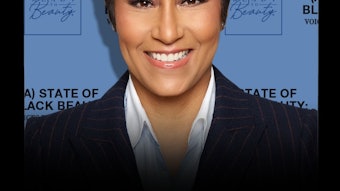
According to Sharon Amezcua, co-founder of 1920g, it's important to enlighten investors with your story and problem-solve, as well as seek experts who can be trusted to scientifically support your claims. She advises companies to go after investors who share your passion and can help grow your business and generate more revenue.
1920g only invests in companies that have come through personal networks, which helps the group de-risk its business by only working with entrepreneurs and people they know.
The woman-owned and U.S.-based company got its name from the year women got the right to vote. The boutique investment bank features partners that have had longtime careers as investors and operators in many sectors around the globe, including the beauty and wellness space.
Amezcua is currently exploring many modalities including eco technologies and how nature will drive the future of wellness and sheds light on the changes a brand must make post-pandemic in our interview.
What kind of companies do you look to invest in?
Sharon Amezcua [SA]: I invest in three main categories—integrative health and wellness technologies and services; fintech platforms that have a new approach to financial services; and innovative and sustainable energy technologies.
What makes a health and wellness company attractive?
[SA]: A big market or a big gap in the market. We are especially on the lookout for integrative health care technology and anti-age optimization.
What is a turn-off about a company?
[SA]: A turnoff would be something that has a small niche and lacks a business model that is reality-based. A business model is more important than the forecast financials. The business model and the assumptions have to make sense and the corporate structure has to be advantageous for investors. It’s largely about the terms; they have to be attractive to investors.
For instance, if a company is in the early stages of development, it could be attractive to do a convertible note versus a straight equity investment. If a company is further along and their valuation is verifiable, then it could be better for investors and for the entrepreneurs to structure a straight equity investment.
If a company strikes a valuation too early, and it's not verifiable, it could be very unattractive to an investor and end up being very dilutive to the entrepreneur if investors argue the validity of the valuation.
What is most interesting to you about the wellness sector?
[SA]: It's quite personal for me, because I am 58 and I want to continuously improve myself. I want a timeless body and youthful skin so that I look as good as I feel. All of my friends and colleagues desire health and well-being, too, and I enjoy sharing innovative solutions in the health and beauty sector with them.
What trends have you been spotting?
[SA]: It’s all about the gut biome arena and bringing your gut back to its original form. Also, there are opportunities in the biotech and stem cell arenas and companies making more pharmaceutical grade supplements that keep us healthy and youthful.
Any tips on sprucing up an investor deck?
[SA]: Ten slides should do it. Always start with a problem that will get the attention of investors and tell your story. Provide a solution to the problem that has differentiation and a competitive advantage that you can sustain.
How will you generate revenue? What will it cost to generate that revenue? What kind of margins do you expect to produce? What is the approach to [the] marketplace? What's the marketing and sales strategy? Who is the team that will execute your plan?
State very clear assumptions to your financial model, and then include summary financials. Then, you must have a slide that clearly states 'the ask.' What are you asking investors for? What are the terms of the investment? How will you use the funds?
Lastly, always note the potential return on investment (ROI) and how investors will get their money back in terms of an exit opportunity for the company.
What makes you perk up when you hear it in an elevator pitch?
[SA]: A big market, a product or service with sustainable differentiation, that I can make money if I invest in it and that the product or service can get to market quickly and generate revenue.
What makes you confident when you see it in a media room?
[SA]: Exposure. If a company has gotten a lot of exposure in a vertical market, it is a big plus for investors. Also, we want to see references from someone that is trustworthy and gives their recommendations for the product or service.
What do you predict will be the future of wellness?
[SA]: The future of wellness will come more from nature and from our bodies because our bodies know how to regenerate.
Is there anything you want to add that you look for in companies you invest in?
[SA]: It's all about the people. If you have the best idea in the world and patents or technology, but you don't have the right team to lead, operate and finance it, then you don't have anything. It's not really about the idea, it's all about the people who will build and operate the company.
What changes should a brand make in this time of transition?
[SA]: If you're targeting online retail, you have to think about it, because that game has changed forever. You need experts and publications that can be trusted, and the more science you have to back up your claims, the better.
What should wellness brands consider when seeking investors?
[SA]: Entrepreneurs should go after investors with interest in your sector first and foremost. These hands-on investors will be more useful in helping grow the business and subsequently generating revenue.
What distinguishes you from other investors?
[SA]: We are serial entrepreneurs (we know how to create and build and grow companies) and serial investors (we know how to finance and exit companies) and we are active and not passive with our companies.










